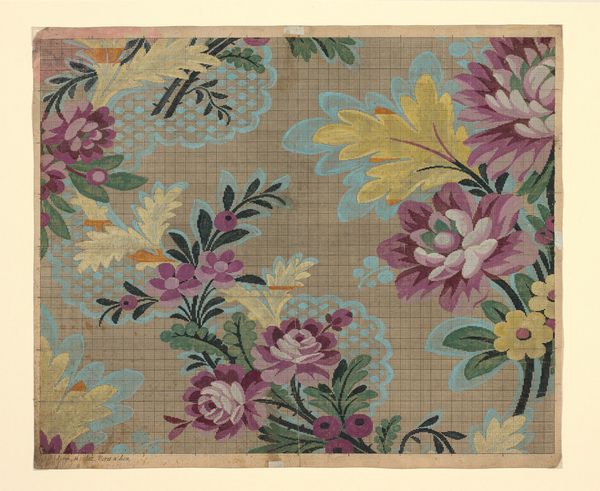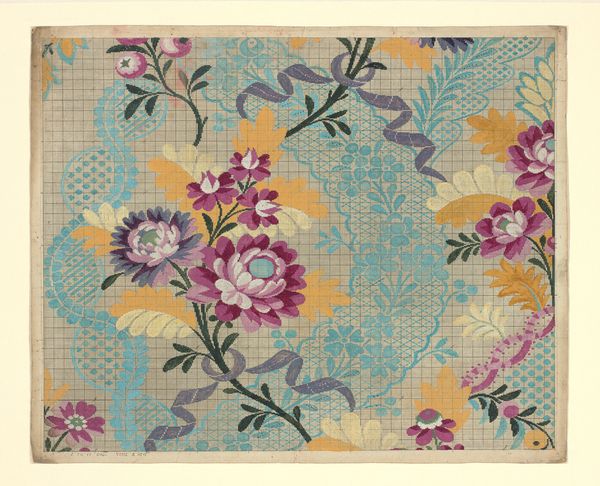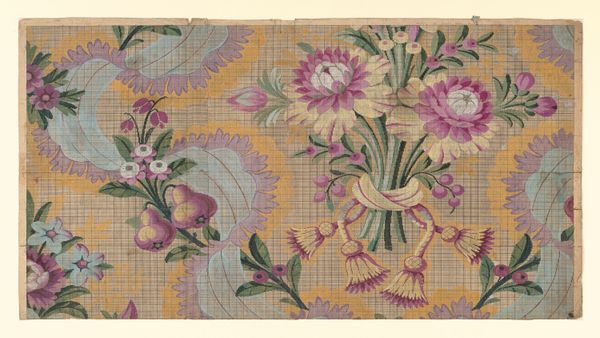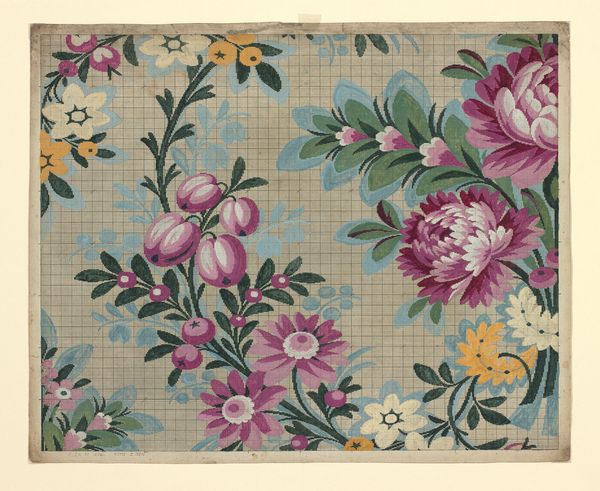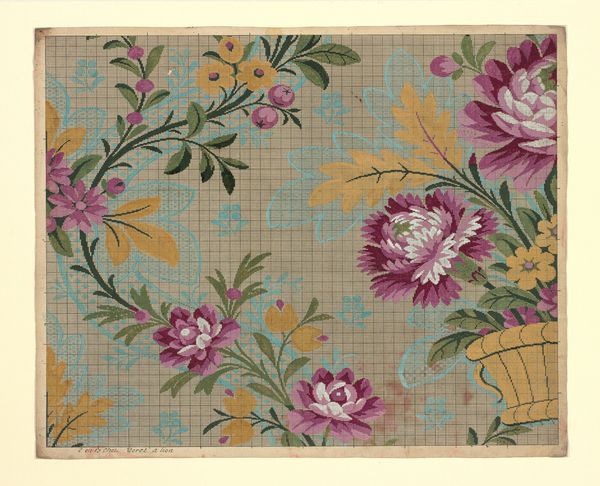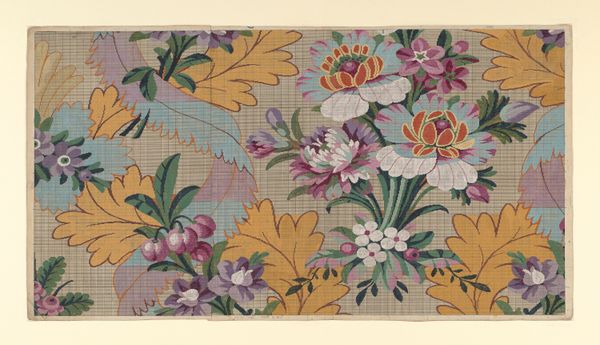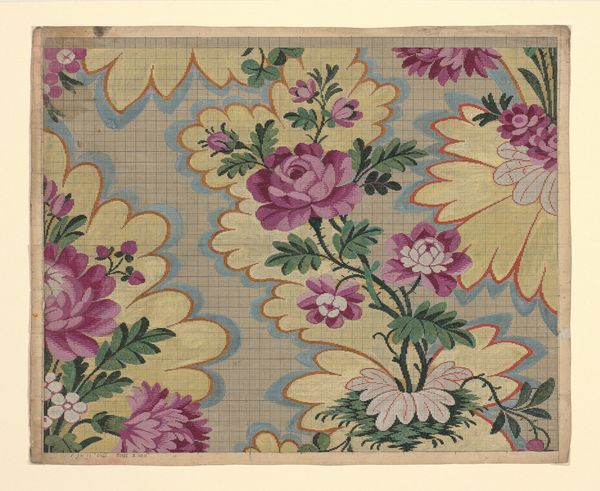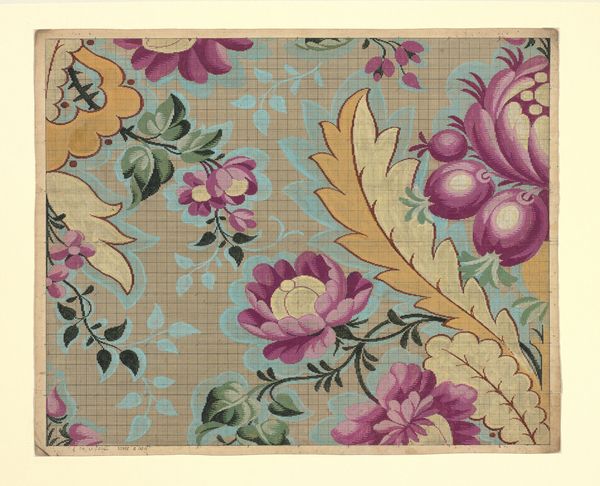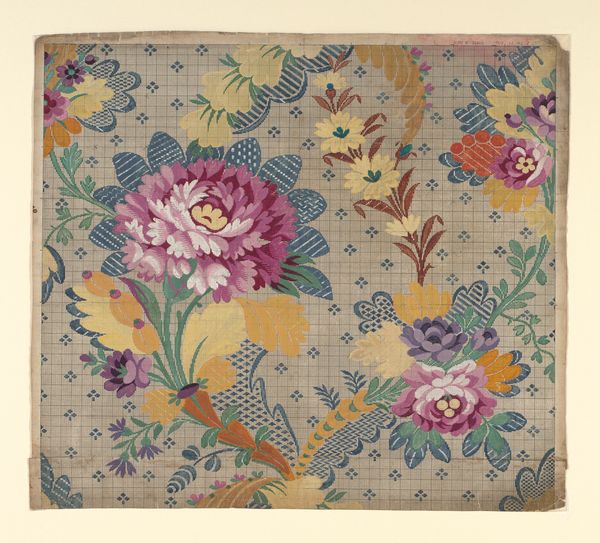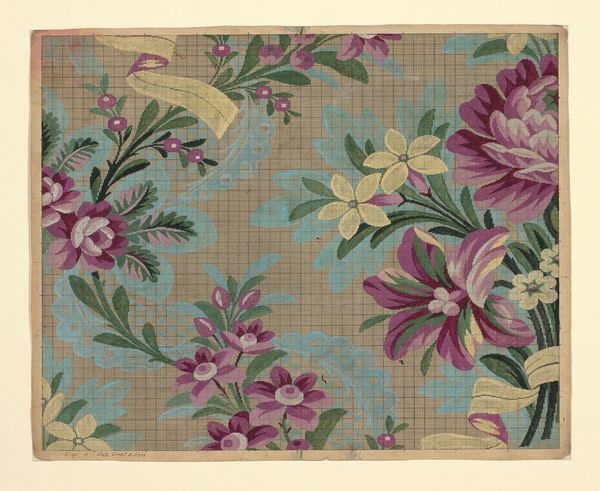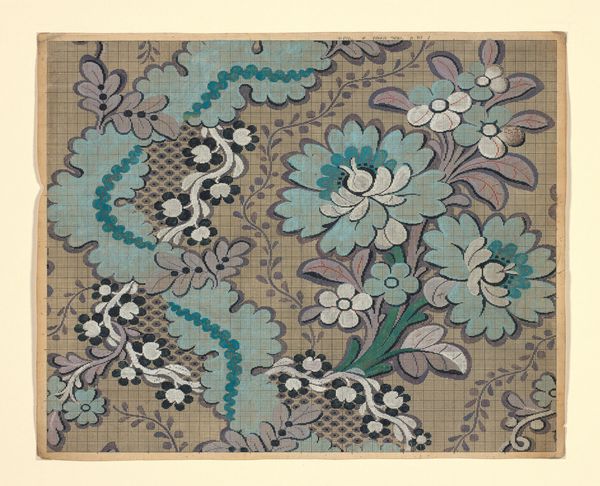
drawing, textile, paper
#
drawing
#
organic
#
textile
#
paper
#
geometric pattern
#
organic pattern
#
decorative-art
Dimensions: 44.8 × 56.2 cm (17 5/8 × 22 1/8 in.)
Copyright: Public Domain
Curator: So, here we have a design marvel: "Mise-en-carte (Point-paper)," created between 1760 and 1790. It's currently residing here at the Art Institute of Chicago. Editor: It feels like looking at a dream—floral fantasies caught in a geometric grid. The colors are just, vibrant, yet it feels delicate at the same time. What strikes you about it? Curator: Well, you know, when I look at this, I see the echoes of labor, skill, and a bygone era. Each carefully plotted point, each hue chosen on this paper, representing the threads to be woven. It is textile design at its finest, where art, craft, and labor truly merge, you know? Editor: Absolutely. There's something revolutionary in taking the tools of control—the grid, the planned design—and using them to create something so aesthetically rich. These were Rococo artisans playing with structure, subverting the grid, allowing nature to bloom within constraints. Also the way in which women’s labor was so deeply embedded in the textile production. Curator: And consider the broader historical moment! These intricate patterns adorned the homes and bodies of the wealthy during a period of social upheaval. Rococo designs are often perceived as frivolous but they really were quite radical too, defying classical norms. This one on paper here, with these lovely purples and teals just strikes me as an exceptional case study for the time. Editor: The fact that we're looking at it now, years after it was created, in a space as public as a museum. The drawing captures a cultural dialogue, and those hand-drawn mistakes are kind of like resistance or a rebellious, subversive act, that humanizes labor so to speak. Curator: Absolutely. There’s a certain vulnerability embedded in that process, as though an unkept promise, to speak to the conditions of creation itself. Almost an ironic reveal of what it means to construct under systemic constraints. It whispers to you of resistance in even the most beautiful things, does it not? Editor: Definitely. It encourages us to remember how closely art is connected to resistance, identity, and that relentless impulse towards both order and chaos. Curator: Indeed, an insight that shifts the focus to an awareness, where art invites conversation with labor!
Comments
No comments
Be the first to comment and join the conversation on the ultimate creative platform.

